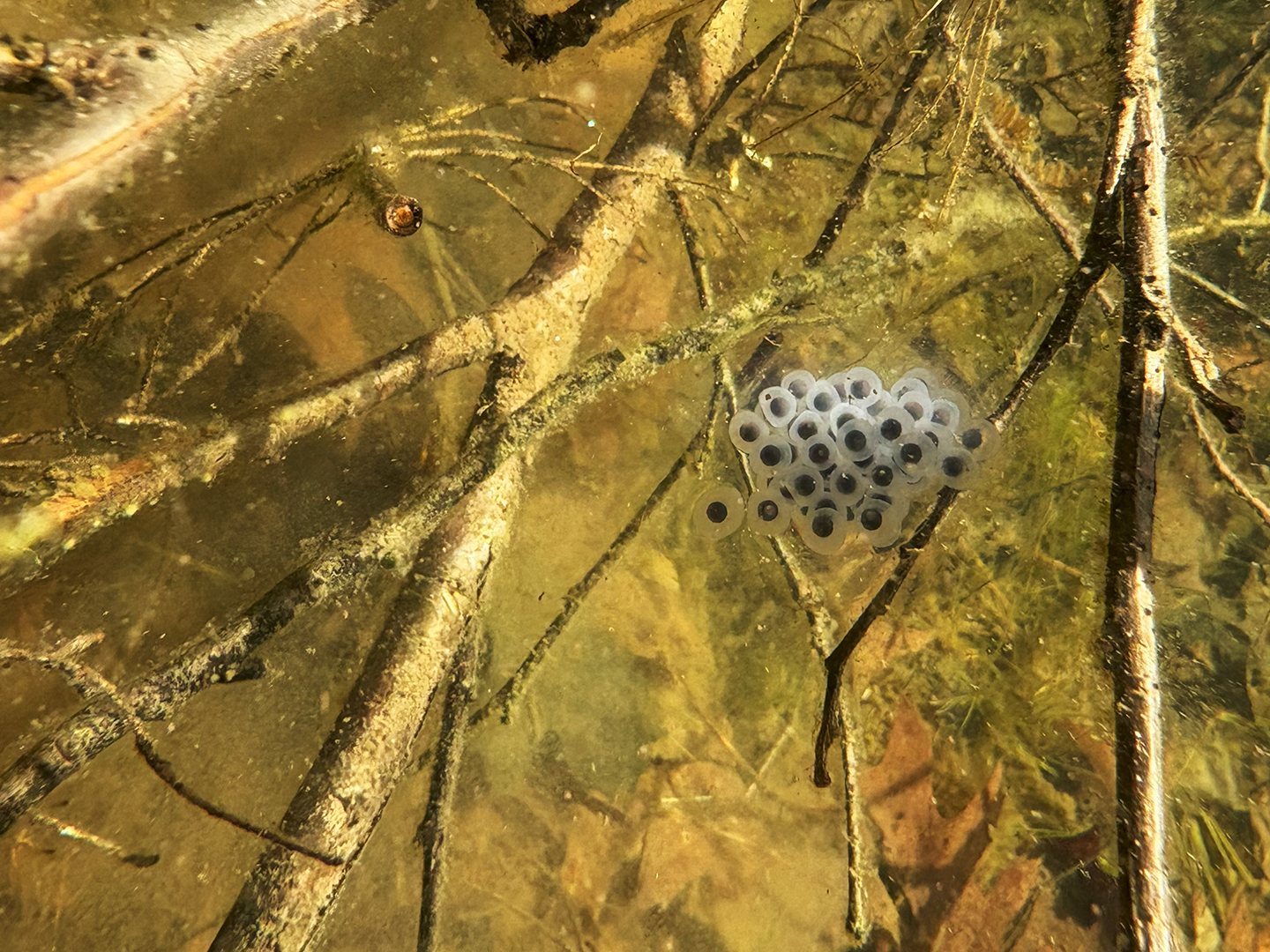Spring peepers, salamanders and toads, Oh my!
Springtime in the northeast was alive with the sounds of the aptly named Spring Peeper. You may have noticed if you were driving down the road on a rainy spring night that parts of the road might have been covered with small dots of hopping creatures, these are likely Spring Peepers or Wood Frogs! Warmer weather and rainy nights trigger mass migrations of these species along with Spotted and Jefferson/Blue-spotted salamanders as they move to vernal pools to breed. Vernal pools are depressions on the landscape that fill with the spring rain and snow melt from the winter to provide temporary water bodies without fish presence. The lack of fish predators allows amphibians to lay eggs which will hatch into tadpoles or salamander larvae more safely than if they had to breed in ponds with fish. USGS, along with partners at National Parks and National Wildlife Refuges across the northeastern US, has been monitoring vernal pool species like wood frogs and spotted salamanders since 2004.
As we come to the end of spring in the northeast, the soundscape changes to a chorus of Grey Treefrogs and two species (American and Fowler’s) of toads. These species can breed in many different types of water bodies, sometimes even trying to breed in roadside ditches or puddles. Toads are competitive breeders and can form what some refer to as a toad (mating) ball where one female may be surrounded by many males looking to fertilize the female’s eggs as she lays them. Toads are external fertilizers, meaning that as the female lays her eggs the male will release his sperm into the water to fertilize the eggs.
Moving into summer, the sounds of the forested waterbodies will change to the low thrum of American Bullfrogs and the high pitch twang of Green Frogs as they are startled into the water by any disturbance. You might see both species as they are commonly found around or in water. To tell the difference between Green and Bull Frogs, all you need to do is look to see if the individual has two ridges (called ‘dorsolateral folds’) down each side of its back. If those folds are there, it is a Green Frog, if they are not, it is a Bull Frog. Be sure to listen to all of the sounds you hear over the spring and summer at the pond, can you recognize them all? If you want to test your knowledge, check out the USGS Frog Quizzes.




